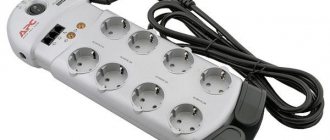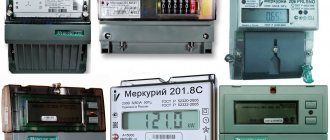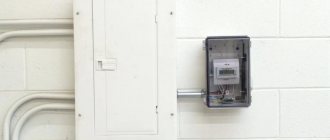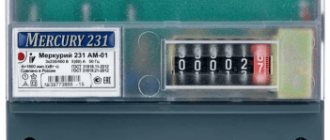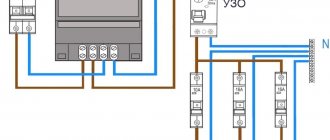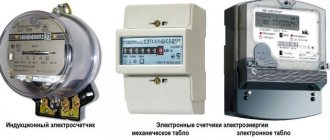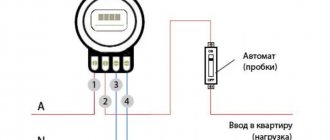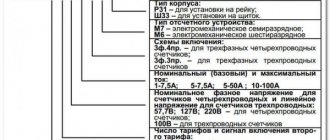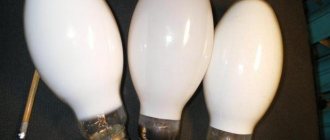- April 18, 2020
- Electricity
- Anna Gorbenko
Installing an electric meter is an inevitable moment for any owner of an apartment, studio, office space, production workshop, warehouse, etc. If you are a consumer of electricity (whatever its direct purpose may be), one way or another you will have to install an electric meter. Otherwise, you risk being subject to serious penalties, the amount of which will unpleasantly surprise you.
Problem of choice
When it comes to installing a metering device in an apartment, some users are perplexed. Which one to choose: single-tariff or multi-tariff meter? What is the difference? Which one is considered optimal and for which networks is it suitable? All these questions seem too complicated at first. And to answer them, you need to understand the fundamental essence of these devices and make some preliminary calculations.
Differences
The fundamental difference between single-tariff and two-tariff electricity meters is, in fact, visible from the definition itself. But this is not enough.
Before purchasing, it is fundamentally important for many users to understand how a multi-tariff meter differs from a single-tariff meter, and which meter to choose would be more correct, based on the conditions for using the energy resource.
And this is an absolutely rational position, because knowledge of any nature is a powerful tool thanks to which you can get what you want and not worry about missed opportunities. This is why it is really important to learn about the features of different models of accounting devices before purchasing one of them.
Additional options
In addition to separate tariffs, modern electronic meters can have a number of other additional options. They are the difference between a single-tariff meter and a two-tariff meter. These include:
- entering monthly indicators into memory cells;
- transferring data to a computer;
- taking instant readings – current consumption, voltage, active power at a moment in time.
- Logging of peak consumption points, voltage surges, phase measurements and much more.
But, as practice shows, most of these functions remain unclaimed for household consumers.
Characteristic features of single-tariff devices
Single-tariff devices read information about the consumed amount of electricity consumed at a single established tariff. It “winds up” kilowatt after kilowatt at a clearly established fixed rate for each of them, without switching from one built-in meter to another.
The very principle of calculating energy consumption in this regard is similar to the good old induction meters. Unless they worked due to magnetic fluxes and an aluminum disk inside the device, and electronic models reflect information directly on the indicator board.
But their similarity lies in the fact that every day the user consumes electricity and knows that at the time of paying for the services of the energy sales company, he will simply need to multiply the “inflated footage” of a kilowatt by a specific tariff established within the framework of the state pricing policy for this resource.
Which electricity meter is better to install in an apartment: classification of devices
When looking for where to buy an electricity meter, it is important not to forget that the selection and purchase of a device must be made taking into account all factors. The device cannot be returned or exchanged if there are reasons that prevent its installation, since the registration of the sale is accompanied by making the appropriate notes in the passport. This document contains a serial number, as well as a stamp affixed by the state verifier.
Electric energy meter
Replacing an old electricity meter with a new device is carried out in the following cases:
- non-compliance of the device with the requirements put forward by the energy company;
- device failure;
- moving into a new living space.
Devices for calculating electrical energy are classified according to the following criteria:
- Type of design (mechanical type or induction and electronic).
- Number of phases (single- and three-phase).
- Type of measured energy (devices for measuring reactive, active energy, as well as universal ones).
- Tariffs (one-, two- and multi-tariff).
Description of multi-tariff devices
Multi-tariff (multi-zone) installations are somewhat more complicated. The key point of such devices is that the energy consumed is distributed over specific time intervals. What is it for?
The thing is that energy sales companies set different tariffs for the use of electricity at different times of the day. There is daytime and there is nighttime. There is a “peak” time, when the majority of the region’s population returns from work and massively loads the electrical networks, and there is a “half-peak” time, when much less electricity is consumed.
In other words, the purchase of a multi-tariff device with the correct temporary consumption of electricity allows the owner to save money.
Calculation of economic benefits
To calculate savings, you need to compare costs for two types of metering devices.
Example.
Consumption in winter is 300 kW per month. Tariff - 3.67 per kW/h. Thus, with a single-tariff meter installed, the consumer will have to pay for the services: 300×3.67 = 1101.00 rubles.
Consumption in winter is 300 kW per month, but 100 kW is during the day and 200 kW at night. The volume of kilowatts is calculated separately, each according to its own tariff. Day – 100×4.22=422.00 rub., night – 200×2.20=440.00 rub. The total amount for the two-tariff meter for the month will be 862.00 rubles.
Now the difference is calculated and the savings are determined: 1101.00−862.00=239.00 rub.
Over the course of a year, a larger amount comes out: 239.00×12=2868.00 rubles.
Using economic calculations as an example, it is obvious that installing a two-tariff meter allows you to save a lot of money.
Types of multi-zone metering devices
All multi-zone devices are divided into two- and three-tariff.
- The first ones work due to the possibility of setting two modes: night and day. During the night time interval from 23:00 to 7:00, tariffing is carried out with the introduction of a 50% rate, while during the day it is a 100% payment.
- The latter work by setting three modes: night time, “peak” and “half-peak”. At night, a coefficient of 0.4 of the standard tariff is introduced, during “peak” hours (from 8:00 to 11:00 and from 20:00 to 22:00) a coefficient of 1.5 is applied, at the rest of the time (“half-peak” ) – this indicator is 1 (payment at the standard rate).
Briefly about the main thing
Metering devices are required to be installed at each facility that is provided with energy supply.
Two-tariff meters keep track of consumption over two time periods: day until 11 p.m., night until 7 a.m.
There are several types of electricity meters based on different parameters. The basic characteristics are considered to be power, current, voltage, reception, transmission and control of information about electricity consumption.
The choice is also influenced by the installation method, accuracy and reliability class of the device.
Advantages of multi-tariff devices compared to single-tariff devices
Electricity consumption in residential buildings often experiences significant daily changes. This is due to the fact that nighttime energy consumption will in any case be minimal compared to daytime for obvious reasons: everyone sleeps at night. In the morning, when everyone is getting ready for work, electricity consumption jumps again, and in the afternoon, when virtually everyone is at work, this figure drops again. Naturally, upon returning home in the evening, people begin to cook dinner, clean the house, watch TV, charge their gadgets - all this requires serious consumption of electricity. And all these moments inevitably lead to significant fluctuations, which is why neutral, “peak” and “half-peak” moments in the use of energy resources appear.
The advantages of multi-zone devices for metering consumed electricity lie precisely in the fact that these intervals can be controlled. The multi-tariff meter stands out against the background of single-tariff devices with the following winning points:
- The ability to connect three-phase household appliances - a standard single-phase electric meter may sometimes not be enough for devices such as, for example, an electric boiler for heating water (water heating boiler), electric stove, electrically driven appliances, etc.
- Possibility of preventing phase imbalance resulting from electrical overload. Single-tariff single-phase electricity meters do not have this function. Multi-tariff installations tend to connect those devices that do not function at low voltage.
- The ability to distribute the load evenly and rationally, selecting the appropriate phase for each device.
- Possibility of increasing power consumption if necessary.
- Reducing the rated current of the protection device located in the distribution board. This, in turn, increases the level of safety in using electricity.
- Preservation of indicators throughout the entire life of the device. Agree, it is very convenient if payment receipts are lost to have the data recorded in the device.
- Significant savings in electrical energy at night and during off-peak times. When consuming electricity at night, you will have the opportunity to pay for the services of the energy supply company in an amount reduced by 4 times compared to the daytime tariff. In "half-peak" zones you will be able to save a quarter of your daily budget.
TOP 2 three-phase electricity meters
These devices are used where there is high power consumption. They have high power and a complex design; the flow rate is measured very accurately. The maximum network voltage is 380 V.
2No2. LEMZ TsE2727U
The device is resistant to various types of influence (such as electromagnetic radiation, weather, mechanical), and is also characterized by high ease of use. The maximum load is 100 A. Note that the software provides very great capabilities: it not only keeps track of energy, but also controls operating modes, and is responsible for storing information and transmitting it.
pros
- long service life;
- 8 tariffs supported;
- high degree of protection;
- the presence of a fuse that prevents the theft of electricity.
Minuses
- Setting up tariffs is quite difficult.
Prices for LEMZ TsE2727U
LEMZ TsE2727U
1No1. Lenelectro 3.D1 1.0.A
A device with an accounting log and control of a number of parameters provided by the manufacturer (these include current, frequency, phase power, etc.). We also note that the accuracy class corresponds to the 2nd, the display displays various useful information. Thanks to archiving, you can store information for the last 3 years.
pros
- low cost;
- logbook;
- accurate readings;
- The display is very informative.
Minuses
- difficulties with the initial setup of the model.
Prices for Lenelectro 3.D1 1.0.A
meter Lenelectro 3.D1 1.0.A/s>
Flaws
However, like any other electronic device, multi-zone meters have their drawbacks.
- Firstly, any three-tariff or two-tariff electricity meter is more expensive than a single-tariff one. This is due to the more complex structure of the structure.
- Secondly, installing such a device is more troublesome than placing a simple electronic meter in an apartment. You will have to coordinate the installation of a specific device with the energy sales inspectorate and program it correctly.
- Thirdly, the benefits of such devices are very relative and are significant under certain conditions. For example, if you do not consume electricity at night and are not going to adjust the performance of energy-consuming devices at night, then there is no point in installing such a meter.
Communication Interfaces
As power grids develop, new requirements are introduced for consumption metering systems - automation and connection interfaces. The latter are necessary for transmitting meter readings to local stations and to a unified center, including other types of devices for counting consumed services. For this they use power lines or GSM networks.
The purchase of such an electricity meter, single-tariff or dual-tariff, will be considered expedient only if such automation is introduced in the near future in a local energy-saving organization. In addition, if such an innovation is planned, then you should consider purchasing such a counting device in advance so that you do not have to change it later.
Comparative analysis
So which meter should you choose: multi-tariff or single-tariff? Which is more profitable? And is it possible to use a multi-tariff meter as a single-tariff device?
Let's summarize:
- Multi-zone devices are considered less reliable than single-tariff devices.
- For a multi-tariff meter you will have to pay more upon purchase.
- Single-tariff devices are simpler in design; therefore, their operation also does not require problems with adjustment to the time schedule.
- Switching multi-tariff devices to winter and summer time requires money and time.
- Multi-zone meters have a higher accuracy class (they minimize error rates when calculating consumed kilowatts).
- Multi-tariff devices are much more profitable for residents of large private houses or apartments, in which the main electricity consumption is distributed at night.
In purely practical terms, using a multi-tariff device instead of a single-tariff device is quite possible. The question is expediency: what is the point of overpaying when buying for a device? And besides, payment at tariffs for it subsequently, depending on the specific region, may exceed the single tariff.
Do you need it? Hardly. Moreover, such a procedure must be approved by an energy sales inspector, otherwise this installation will not be considered legal if such a meter model is not on the list of approved ones.
INCOTEX Mercury 200.02 (2 tariffs) 5(60) A
Ideal choice for meter replacement. INCOTEX Mercury 200.02 devices are used for multi-tariff metering and measuring the parameters of two-wire networks with alternating current. The information is recorded and stored, transmitted to ASKUE data collection centers.
Installation - strictly indoors, in a panel or cabinet. Accounting, storage, measurement, data output to LCD, transmission via interfaces - automated operations. Data recording indicating the amount to be paid is done for each tariff separately. You can program the tariff, create monthly schedules taking into account weekends and working days. Each month will be programmed on individual schedules.
Advantages:
- accurate instant measurements;
- multifunctional pulse output;
- absence of magnetically sensitive elements;
- event logging;
- the presence of an auto-self-diagnosis system with an error indicator;
- displaying information on the LCD even when the power is off;
- compact dimensions.
Flaws:
- the price is above average.
Who is a multi-zone meter suitable for?
If you actually do not consume electricity at the time of tariff reduction (that is, at night), such a meter will pay for itself within several years. Therefore, you hardly need such a device in your apartment.
If you have an electric boiler, a water heating boiler installed in your house, there are various electric heating devices, and heated floors are installed under the tiles, you will pay for a multi-zone meter in the first few months. To speed up its payback, it is recommended to switch the operation of the washing machine, dishwasher, multicooker and other programmable equipment to night mode. This will save you extra money.
How to install a multi-zone meter
To connect a multi-tariff electricity meter, you need to carry out a list of certain actions.
- Submit an application to the energy sales company for the installation of a multi-zone device - they will select the appropriate model for you.
- To purchase a device and program it, you need to contact a specialized company to which your electricity supplier will refer you.
- Set an installation date - the service organization will record the call and arrive at the agreed time.
The best two-tariff meters
If you have already decided which meter to choose - single-tariff or multi-tariff - and your choice still fell on the second option, you will definitely want to know which specific model is recognized by users as the best and what you should focus on. Among the multi-zone models, there are optimal options - both dual-mode and three-mode.
When wondering which two-tariff electric meter is best to choose for your home, pay attention to two main models, approved by both specialists and users:
- ABB FBB 11205-108. Country of origin: Sweden. Average cost – 6500 rubles. The current strength is designed for a range of 10-80 A. The program has a built-in clock indicating the date and time. You can switch tariffs according to a designated schedule. The meter can be installed very quickly thanks to the convenient mounting rail. The device is reliably protected from moisture and dust.
- "Lenelectro LE 221.1.R2.P2.5". Country of origin: Russia. Average price – 1116 rubles. This, perhaps, attracts buyers many times more than the characteristics themselves. And they are quite good on the device. Easy-to-set up programming makes it possible to configure the device in such a way that it fully complies with the tariff schedule of the corresponding region. You will install this device completely free of charge (which is important) and forget about problems with it for at least 30 years. Reviews about Lenelectro multi-tariff electricity meters are mostly positive.
TOP 3 single-phase electricity meters
Such devices are used in networks where the voltage is 220 V, and the daily electricity consumption should be no more than 10 kW. The design of such meters is simple, and it is very convenient to take readings from them.
3No3. TDM Electric "Mars" SQ1105-0004
The model is distinguished by the fact that its body is made of high-quality non-flammable plastic, which greatly increases the safety of operation. The load on the device should be no more than 100 A. The device is equipped with a special fuse and three seals, which guarantees protection from external influences and excellent accuracy of readings. The voltage should be no more than 230 V.
pros
- compactness;
- high hull strength;
- LED indicators;
- stable work.
Minuses
- lack of dust and moisture protection.
Prices for TDM Electric "Mars" SQ1105-0004
TDM Electric "Mars" SQ1105-0004
2No2. Enron "Topaz" 101-5(60)1-Ш2Р1Э
In this device, the seals are located on the front panel, which makes it easy to monitor their integrity. There is a transparent cover, which makes it easier to control the correct connection. The current value should not exceed 60 A. The model is immune to electromagnetic influence, and therefore it is impossible to influence its operation from the outside.
pros
- high reliability;
- the interval between checks is quite large;
- ease of installation;
- high hull strength.
Minuses
- lack of fastenings.
Prices for Enron "Topaz" 101-5(60)1-Ш2Р1Э
electric meter Enron "Topaz" 101-5(60)1-Ш2Р1Э
1No1. Micron SEB-1TM.02M.07
The model is characterized, first of all, by high reliability and an archiving option. What became possible thanks to non-volatile memory and the fact that there are no aluminum electrolytic capacitors in the design. With a maximum permissible current of 80 A, the device can operate without problems at temperatures from -40 to +50 degrees. You can keep an accounting log for 4 tariffs at once (per year).
pros
- flexibility of settings;
- accounting archiving;
- presence in the watch design;
- long service life.
Minuses
- quite high cost.
The best three-tariff meters
According to experts and users, the best multi-tariff electricity meters operating in three time modes (three-tariff) are represented by two optimal domestic models:
- "INCOTEX MERCURY 201.8". Country of origin: Russia. The average cost ranges from 600 to 700 rubles. Liquid crystal display, unpretentiousness, operability at high humidity (90%) and low temperature (minus 45 degrees), as well as a modular housing and measuring transducer - all this causes only flattering responses from meter users.
- "Energomera CE 101 S6". Country of origin: Russia. Average cost – 650 rubles. It is placed under a single-phase network, works stably, retains readings even in the event of electrical wiring failures, is not afraid of moisture, low temperatures, has a 5-year warranty and a promised service life of more than 30 years.
Which company to choose
Due to the fact that electric meters are installed for decades, you should buy the device from reliable manufacturers. In the future, this will avoid problems with equipment replacement, documentation and measurement accuracy.
In Russia there are three reliable manufacturers of electricity metering devices:
- Taypit (Neva);
- Inotex (Mercury);
- Energy meter.
All three are large companies with over 10 years of experience; experts recommend choosing devices from these companies.
